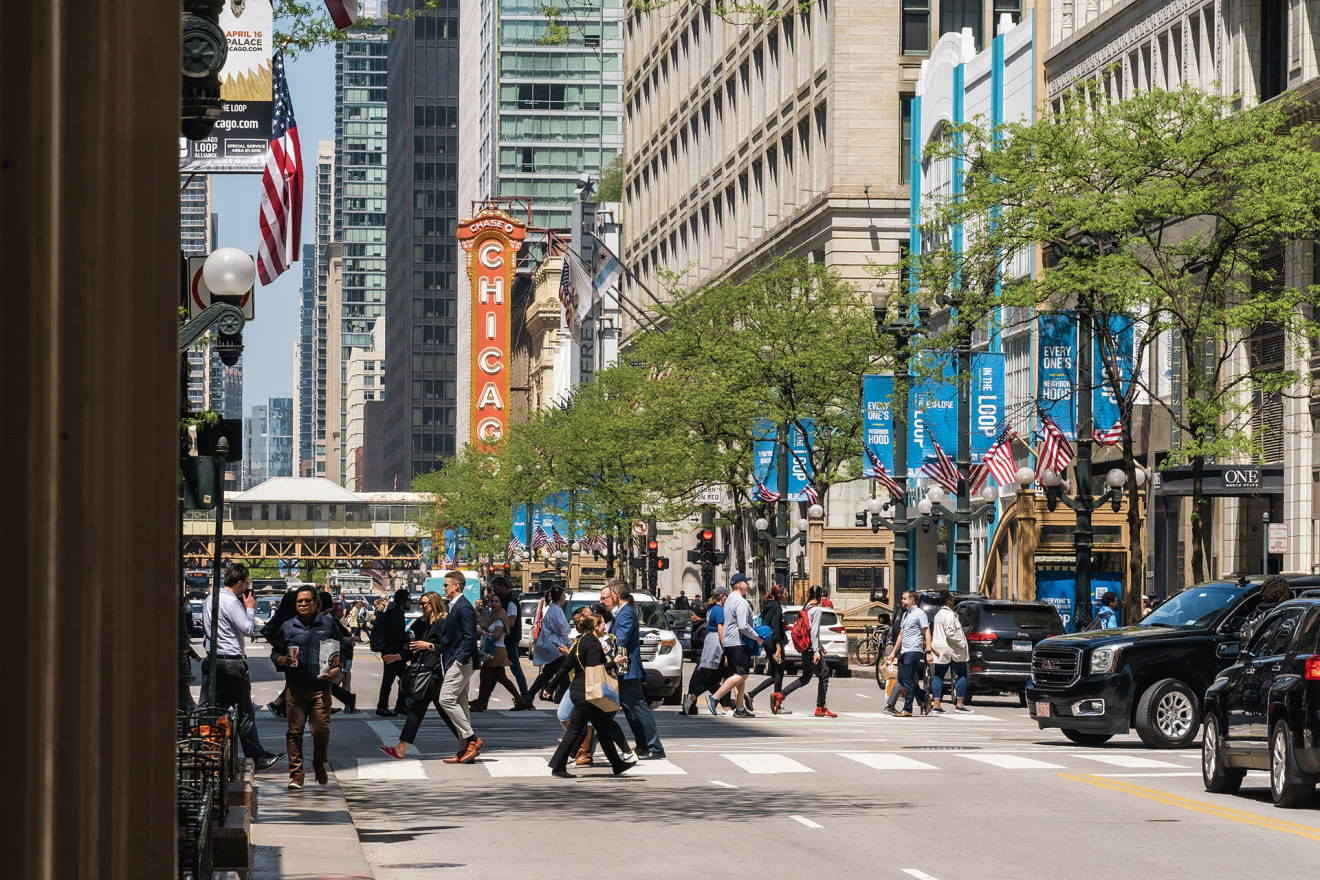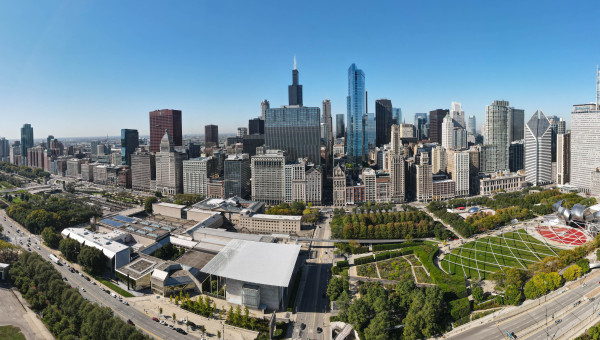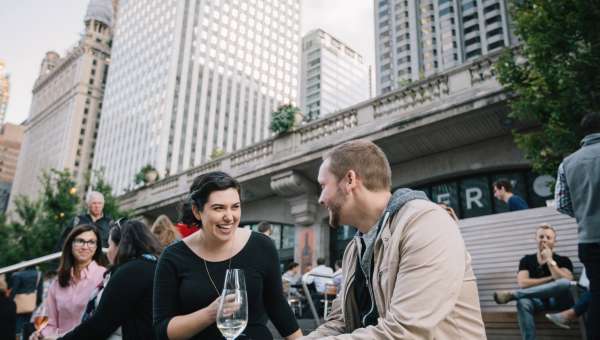Posted 2 years ago in Trending
6 MIN READ – People seem to have a lot to say about downtown Chicago these days. Many rave about the famous city, while others, who maybe haven’t visited recently (or ever), seem skeptical. But let’s cut to the chase. How is the Loop really doing these days?
Award-winning and internationally acclaimed
Chicago’s downtown area, which includes the Loop, is the largest central business district in the United States outside of Midtown Manhattan. It also features the fastest growing residential downtown in the United States; and year after year, the city is named the best big city in the U.S.; one of the best cities in the world; and the top metro area for corporate relocation and growth.
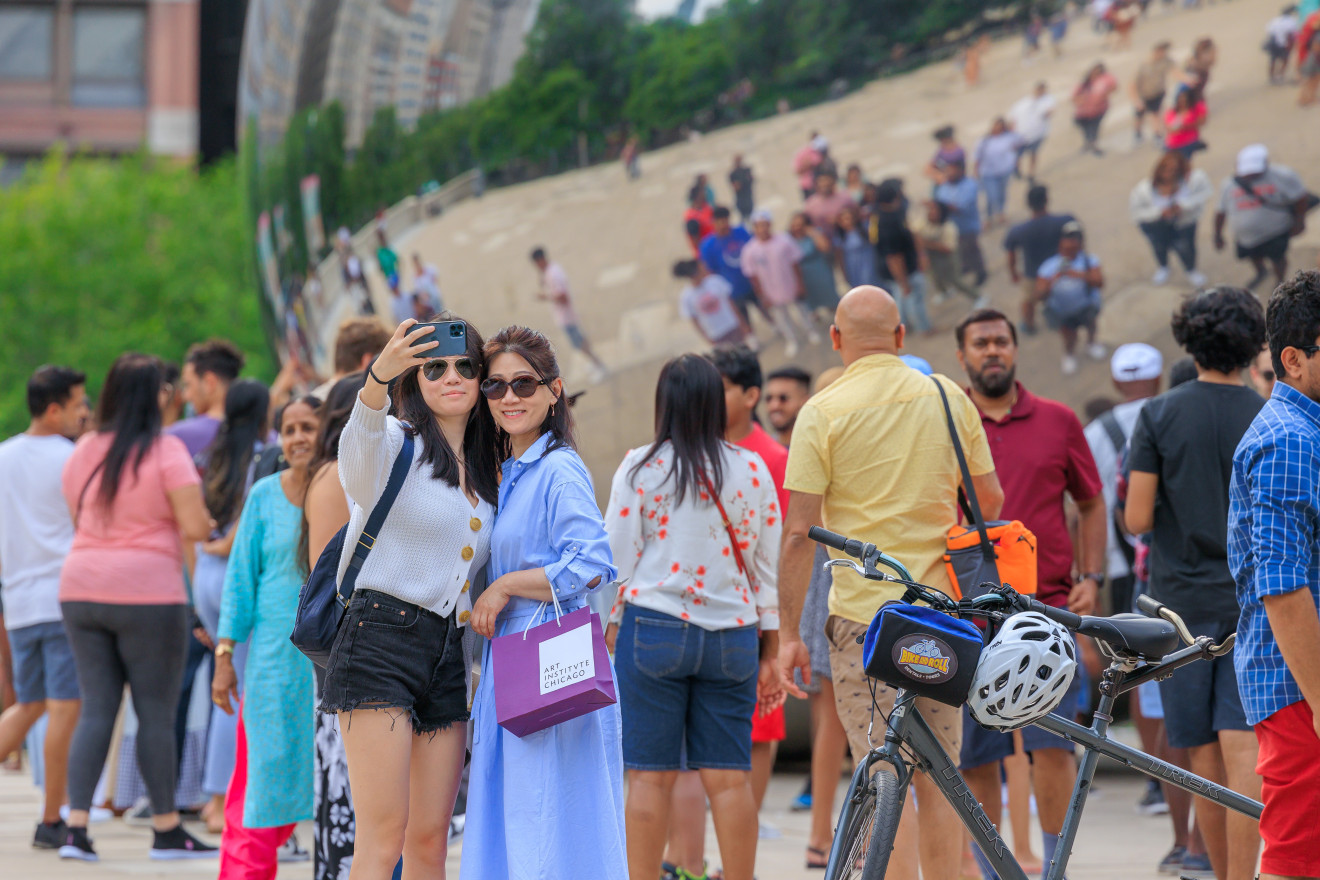
Residential hot spot
Chicago Loop Alliance recently released a study proving that Chicago not only held onto its title of the fastest growing downtown in the country, but that the Loop population grew an additional 10 percent during the pandemic.
Business is still attracted to the Loop
Maintaining the title of the number one metro area for corporate growth and expansion for over ten years, it is no wonder many consider Chicago the “boss of the business world.” A variety of major industries continue to show their commitment to the revitalization and innovation of the Chicago Loop. Google’s expansion at the Thompson Center; Vivid Seats and Ferrero’s relocation to the Marshall Field building; and the return of retail stores like Saks Off 5th, Blick Art Materials and Toys “R” Us at Macy’s to the iconic State Street corridor all demonstrate the power of continual investment supporting a strong and healthy central business district. Forward-thinking businesses like Google and others invest in the Loop because it is a smart business decision.
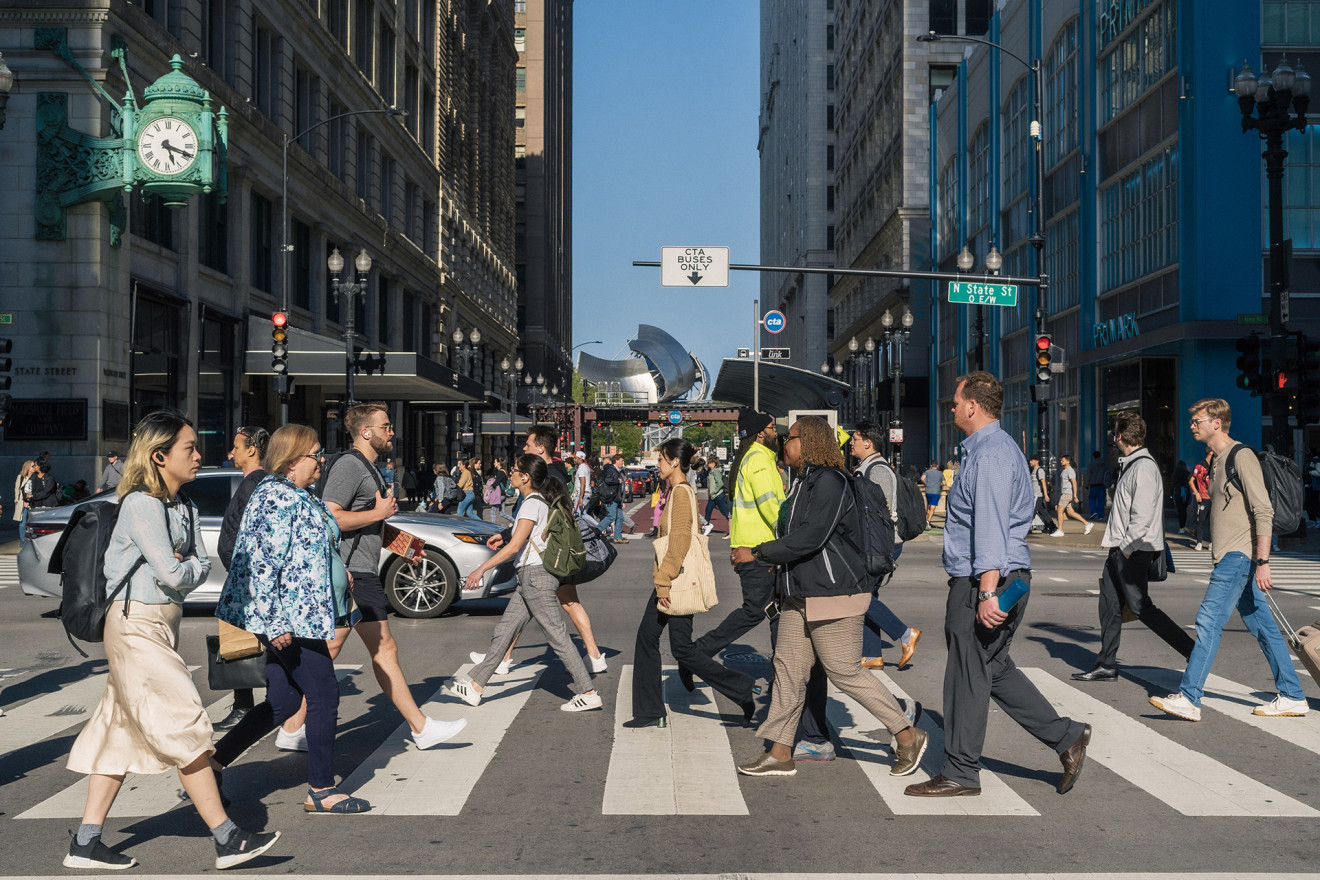
A destination the world watches and visits
Over 50 million people from all over the world visit Chicago each year. During the first weekend of June in 2023, Chicago set an all-time record for hotel occupancy and revenue. People from all over the country and world love to visit Chicago. This international affection has earned Chicago the title of the “Best Big City in the U.S.” by Condé Nast Traveler for over six years in a row. The outlet describes the reasons for the repeated top placement perfectly:
“It's no wonder Chicago is topping this list yet again. A world-class destination known for its impressive architecture, first-rate museums, brilliant chefs, and massive brewing scene, it’ll take several repeat visits to get through your list of must-dos. Most people start downtown—from the Magnificent Mile to the ritzy Gold Coast to funky Old Town—but there are 77 neighborhoods to explore, where you'll find cutting-edge restaurants, chilled-out corner bars, and, no matter where you go, some of the most pleasant people you'll find anywhere.”
Major events like Lollapalooza, NASCAR Chicago, the 2024 Democratic National Convention and hundreds of other programs and events draw hundreds of thousands to the Loop and create billions in economic impact. These groups continue to invest in downtown because of the ability to commune international tourism and Chicagoans alike.
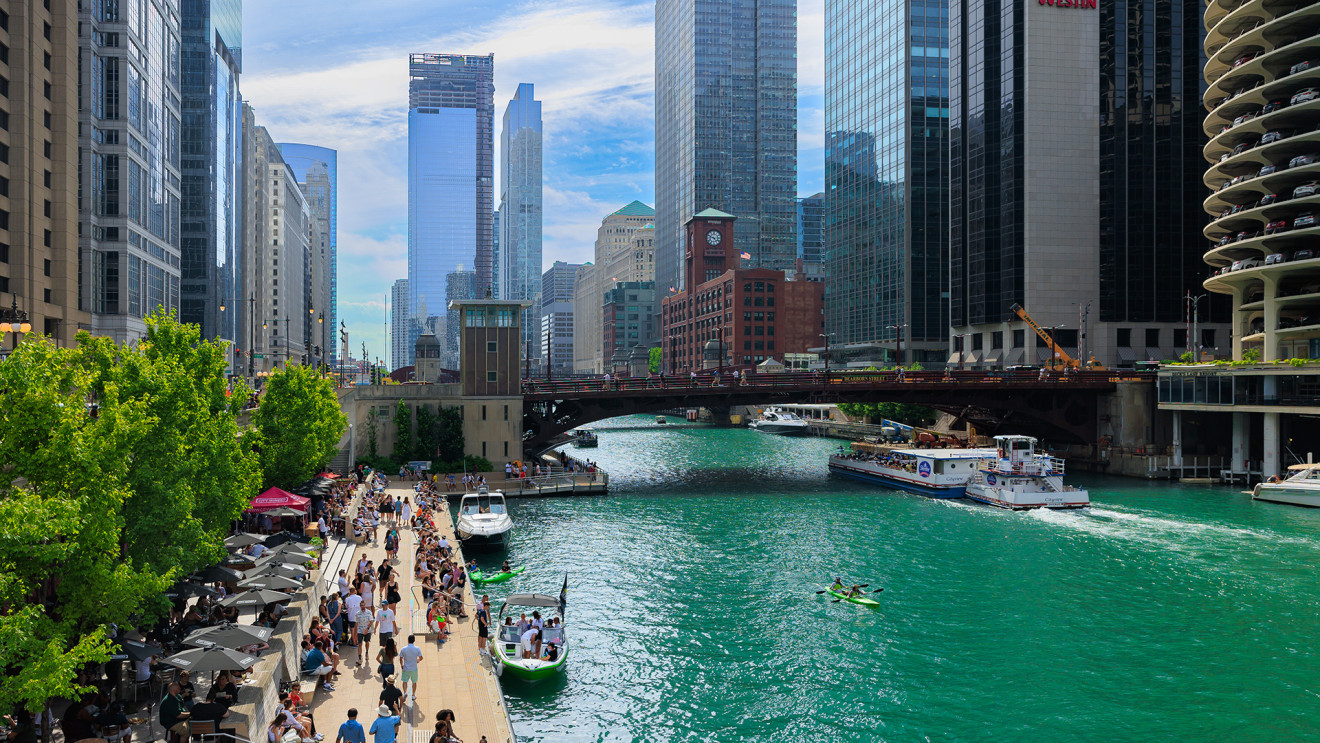
The perception of safety versus the reality
Oftentimes, misleading perceptions of safety and crime are more dire than the reality of current crime statistics for the city of Chicago and particularly the Loop. A recent study by the Brookings Institution showed the actuality of safety downtown does not match people’s perception. Between 2021 and 2022, "local data on property and violent crimes shows that in New York, Philadelphia, and Chicago, downtowns are some of the safest places to be.” Even with an increase of citywide crime, downtowns account for a small share of the increase. Between 2019 and 2022, downtown Chicago accounted for just 6% of the citywide increase in property crime and less than 1% of the citywide increase in violent crime.
And to take an even deeper look at the current state of safety in the Loop, the Chicago Police Department 1st district, which represents the Loop, notes that violent offenses in sexual assault, battery and theft have decreased between 17-56% from the previous year, while only one murder has been reported in the past two years. Overall, the Loop is an extremely safe neighborhood and district, that attracts millions of visitors each year.
Even when looking at the city as a whole, Chicago proves to be statistically safer than the portrayal it receives through the media and elsewhere. A study featured on Moneygeek.com ranked the most dangerous U.S. cities based on the cost of violent crime per capita, and Chicago didn’t even make the top 20. When analyzing violent crime rates per number of residents, Chicago doesn't even make the top 80.
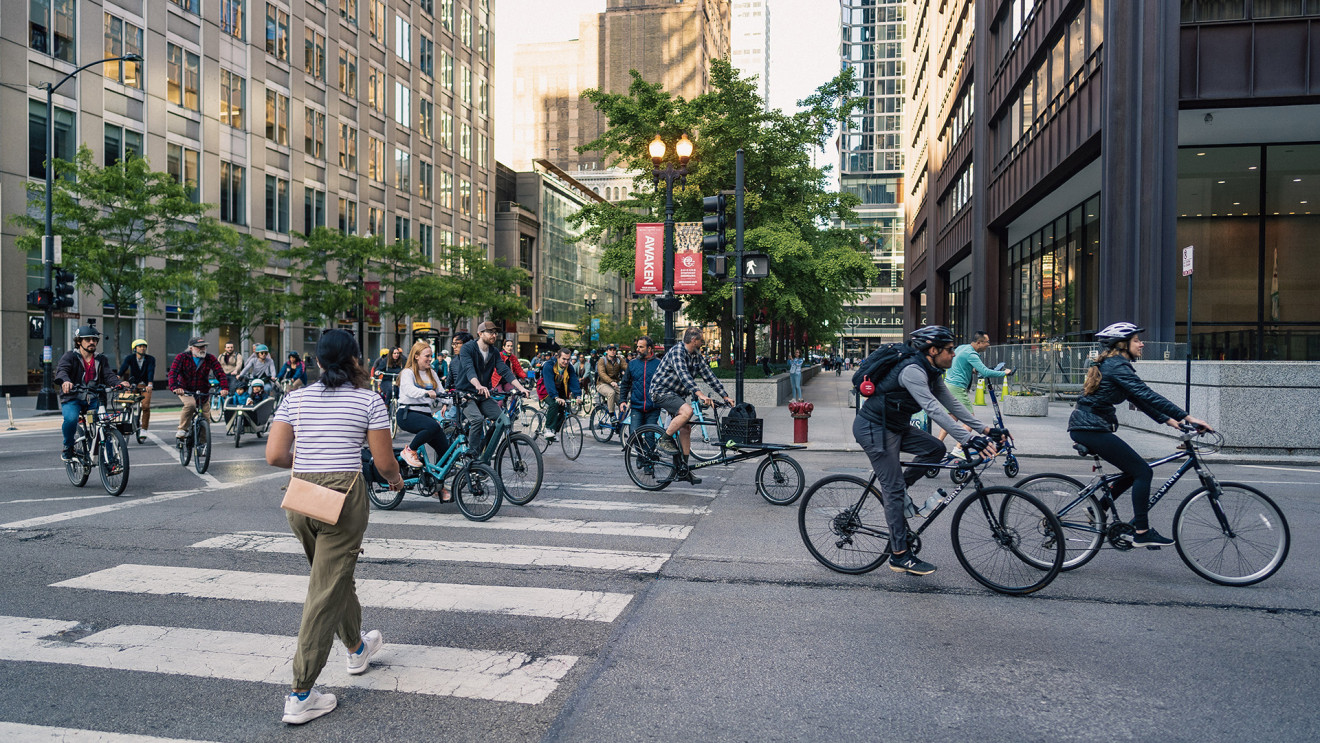
The Loop showcases the best assets a city offers
Like many other top metro areas, Chicago hosts a variety of industries, but unique from areas like Downtown LA and New York City’s Midtown Manhattan, the Chicago Loop is the heart of every industry – finance and banking, arts and culture, philanthropy, dining, retail, hospitality, education, architecture and development, government and more.
Each industry provides key context into what the Loop means for workers and business owners. Few places match the Chicago Loop, where you can experience the luxury of working, fulfilling goods and services, enjoying world-class theater productions, and then returning home (or to your hotel) – all within a few blocks.
Accessible transit
Another strength and uniqueness of the Loop is the district’s extremely accessible transit system. The “L,” Chicago’s public rail system operated by Chicago Transit Authority, represents one of the most successful lines in the country and is quite literally built around the Loop, which is part of how the area earned its iconic name. The Chicago Loop is the only downtown in the U.S. with both elevated and underground train lines, which transport millions of workers, residents, and tourists annually.
The bountiful transportation system doesn’t stop there. Buses, rideshare, bikes, and scooters provide ample means for commuters to make their way to the Loop easily and affordably. Additionally, the Lakefront Trail, which spans over 18 miles of Chicago’s beachfront, aids in the ease of commute, and the city’s extensive automobile infrastructure includes the iconic DuSable Lake Shore Drive which offers stunning views of Lake Michigan and the city’s celebrated skyline along the way.
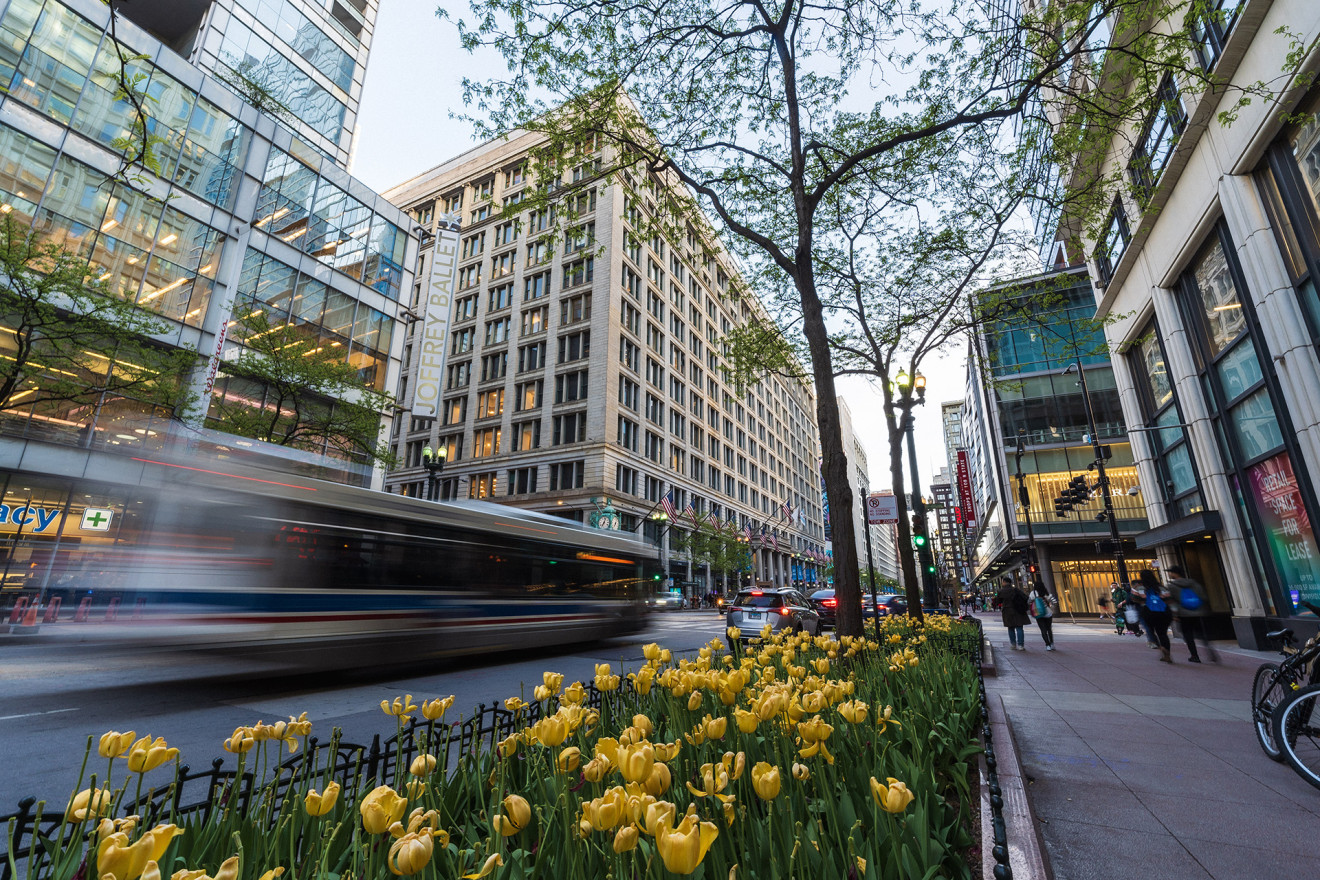
A leader in downtown place management
The Loop benefits from the stewardship of Chicago Loop Alliance, an internationally recognized leader in urban place management. While representing the Loop as a whole, Chicago Loop Alliance also services the oldest and largest Special Service Area in Chicago (SSA#1-2015, State Street between Ida B. Wells and Wacker Drive); works with affiliate organization, Chicago Loop Alliance Foundation, to create free arts and culture programs, such as Sundays on State; and promotes the Loop as a premier destination for workers, residents, visitors, and tourists. Through sector reports in relevant topics like the pandemic recovery, economic impact of the arts, residential impact, and education, the not for profit provides useful resources for Loop businesses to continue building on their success.

Chicago Loop Alliance responsibilities include creating and managing a downtown that is attractive to residents, workers, and visitors. Through the successful Chicago Loop Alliance Ambassador program, a team of ambassadors maintains State Street through clean and safe services, serving as welcome greeters to those entering the Loop; conducting business check-ins with retail employees and other businesses along State Street in the Loop; and acting as a deterrent to volatile situations. The initiative is a welcome venture in unarmed community efforts, which further the reality of a safe and healthy Loop. As proof of success, the program has been replicated in more than 15 other Chicago community areas.
Recovery
While the pandemic challenged downtowns across the world, locals tracked the Loop’s recovery through reliable data and metrics. This regular reporting continues, and the strengths and opportunities of the district remain clear through regularly published State of the Loop reports.
The future
For those with the ability to invest resources during this time of change, the appeal of the Loop proves strong. Clearly, the iconic district will continue to inspire global downtowns for years to come. Smart investors see that. Learn more about the Loop here.
